| September 4, 2009
The Great North American
Loudspeaker Tour: Paradigm Loudspeakers

The entrance of the Paradigm factory in Toronto, Canada.
Main designers: A legion of acoustical and
electrical engineers.
Product profiled: Reference Signature Sub 2
subwoofer ($7499 USD)
Excerpts from my upcoming SoundStage! review of
the Sub 2 (to be published October 1):
"The Sub 2’s hexagonal sealed cabinet measures 24
1/3"H x 22 7/8"W x 21 1/8"D and weighs 289 pounds. It has six
high-excursion 10" drivers, in identical vertical arrays of two each on three of the
sides. These are driven by Paradigm’s Ultra-Class-D power amplifier, which delivers a
claimed 7500W dynamic peak or 3000W sustained RMS when fed by a 120V line. With a 240V/30A
line, the Sub 2’s power output, according to Paradigm, can increase to 9000W (!)
dynamic peak or 4500W sustained. The sheer motor capability of six subwoofer drivers
backed by this much power is enough to propel a Hummer H2. (OK, maybe not quite.)
"Now there’s no question that almost all
manufacturers play the game of specsmanship, especially those that make loudspeakers.
Paradigm’s numbers for the Sub 2 are downright mind-boggling, though I can’t
claim to have tested their validity. Still, Paradigm doesn’t typically embellish its
specs much. Given that, consider this: The Sub 2’s low-bass extension is claimed as
9Hz, with output capabilities of 95dB at 10Hz, 104dB at 20Hz, and 118dB at 60Hz. Remind me
to never listen to 60Hz at 118dB!"
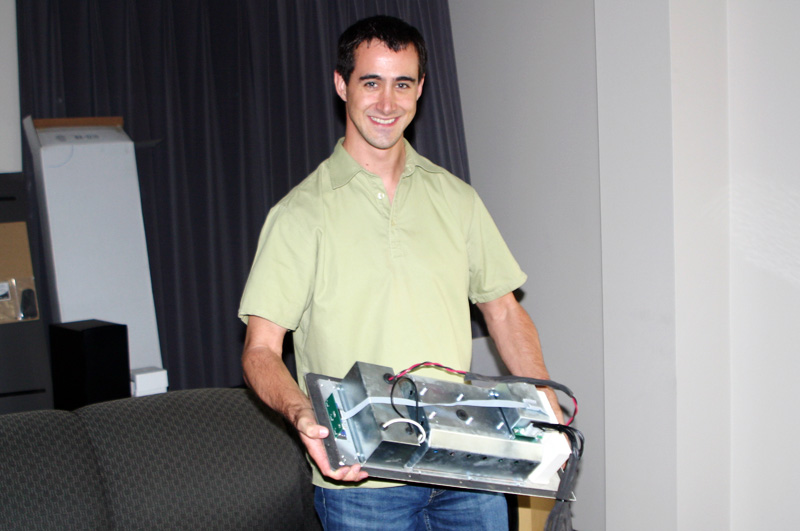
Paradigm’s acoustic R&D manager, Paul Maclean, holding the Sub 2’s
3000W amplifier module.
Paradigm’s vision for the Sub 2: The best
subwoofer Paradigm has ever made. The design brief was for a single subwoofer that could
keep up with a surround system comprising five of the company’s Reference Signature
S8 loudspeakers. Paradigm also stated that they wanted to produce a better subwoofer than
JL Audio’s Gotham g213 ($12,000), but in a smaller package and at a lower price.
According to Paradigm, the Sub 2 is best suited to:
The Sub 2 is able to fill very large spaces with ease. Because its six drivers can
actually handle far more power than its onboard amplifier can produce, this means,
according to Paradigm, that it is always playing with very low distortion: the "Sub 2
can play wide open all day long."
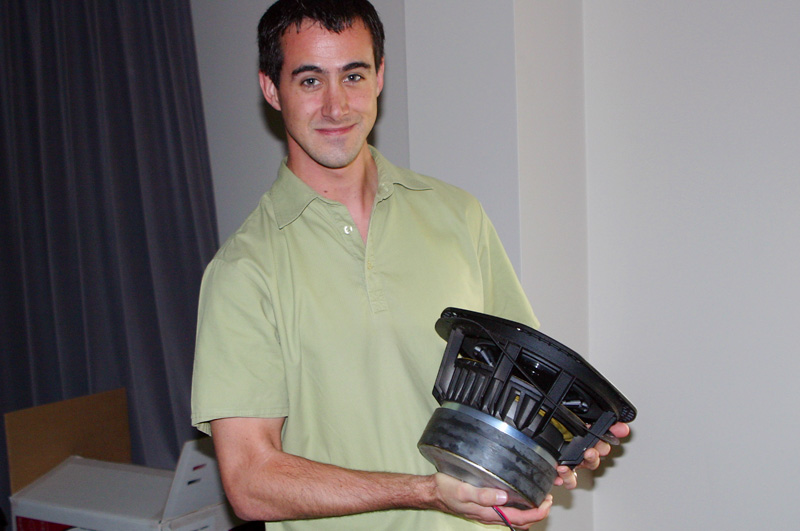
Paul with one of the Sub 2’s 10" bass drivers. Each Sub 2 contains six
of these beasts!
Sub 2 quick facts:
- Theoretically, the Sub 2 could handle two of the
3000W amplifiers that Paradigm has developed for it.
- Paradigm states that the Sub 2’s output integrates
quite easily with those of small satellite speakers.
- Each Sub 2 driver has a ten-layer voice-coil.
- Paradigm’s Perfect Bass Kit (PBK) comes standard with
the Sub 2.
- At 289 pounds, the Sub 2 is the heaviest product Paradigm
has ever made.
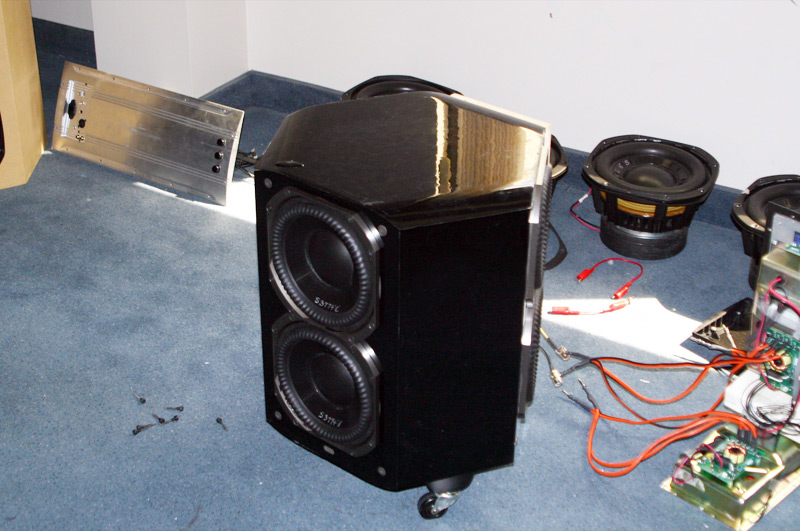
Paradigm is also working on the Sub 1, based on the Sub 2 technology, but smaller
and less expensive.
Blind listening impressions
Paradigm believes heavily in comprehensive engineering,
technical perfection, and precise acoustic measurements -- but they equally value
listening tests, which they regularly conduct in their listening rooms. Paradigm contends
that the best way to get unbiased, accurate results from such listening tests is to
conduct them blind -- i.e., the listener doesn’t know what model of speaker he
or she is listening to. For instance, a listener could be plopped down in front of several
Paradigm speakers, perhaps at different prices; or a single Paradigm speaker and several
models from competing companies; or even several units of the same Paradigm model, the
only variable being, say, a different value of capacitor in the crossover network.
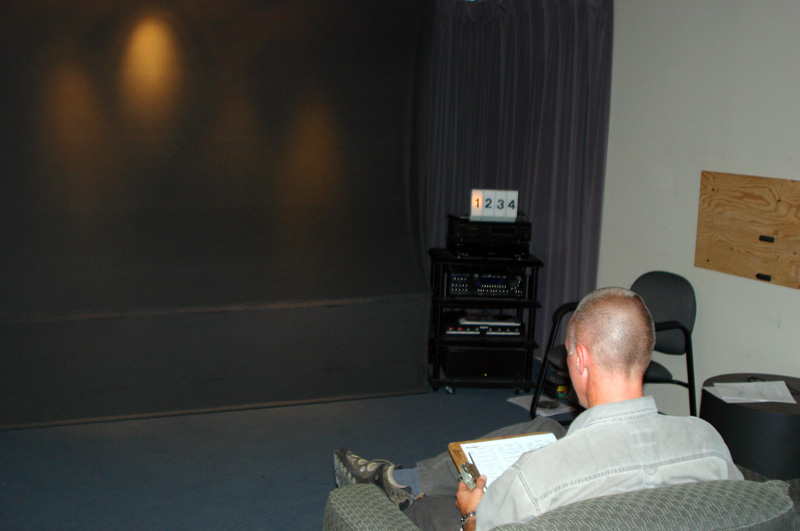
Jeff Fritz listening blind in Paradigm’s in-house listening room.
My blind listening session was enlightening, and affirmed
the value of the process. I was given a remote control, with which I could switch between
Speaker 1 and Speaker 2 whenever I wanted, and set my desired listening level. I was also
supplied with a chart that I could use to rank the speakers in many areas of sound
reproduction. After about ten minutes, I was sure I’d picked which speaker was better
in every parameter. When the curtain was pulled, sure enough, the winner I’d picked
was the Paradigm Reference Signature S8. The opposing speaker was a newer Paradigm model,
paired with a small subwoofer; combined, they retail for about one-fifth the price of the
Signature S8. There was no question in my mind that listening blind resulted in accurate
results; the procedure also removed any preconceptions I might have had about the prices,
sizes, and models of the speakers under evaluation.
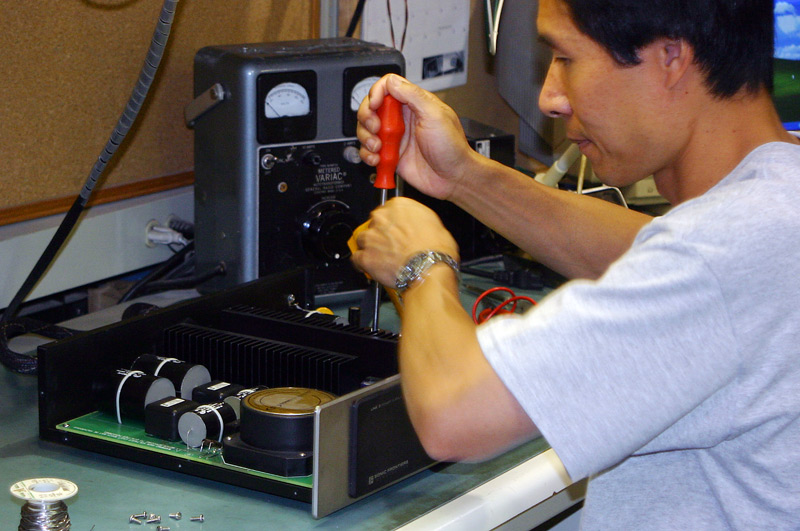
Remember Sonic Frontiers? That’s where the Anthem brand came from. Paradigm
bought Sonic Frontiers many years ago and still services the original gear, no matter how
old.
Company impressions
My tour of the Paradigm plant revealed just how impressive
this company is. They make virtually everything used in every one of their products,
including such things as driver baskets, grille pins, and aluminum feet -- in many cases,
they make the machines that make those parts. During my all-day visit, the company’s
250 employees were busily working away; it was impressive to witness the level of skill
exhibited by the staff as they built drivers from the ground up, monitored wave-soldering
machines, and polished the gloss finish on sets of completed Reference Signature v.3
loudspeakers.
Paradigm’s research and development are conducted at
an extremely high level. Paradigm does it all, designing and manufacturing all their own
drivers, amplifiers, and hardware. They even have machines that can quickly produce
prototypes of parts that they can then immediately test. I was shown a driver basket that
one machine had spit out -- it was going to be installed as a component of a new driver
assembly, which would then be tested for a new Paradigm loudspeaker model. This type of
manufacturing ability greatly reduces the time it takes for Paradigm to bring products to
market -- they don’t have to wait for subcontractors to produce all of these parts.
It also means lower costs and thus lower retail prices; I was told that value for money is
something the company always strives for.
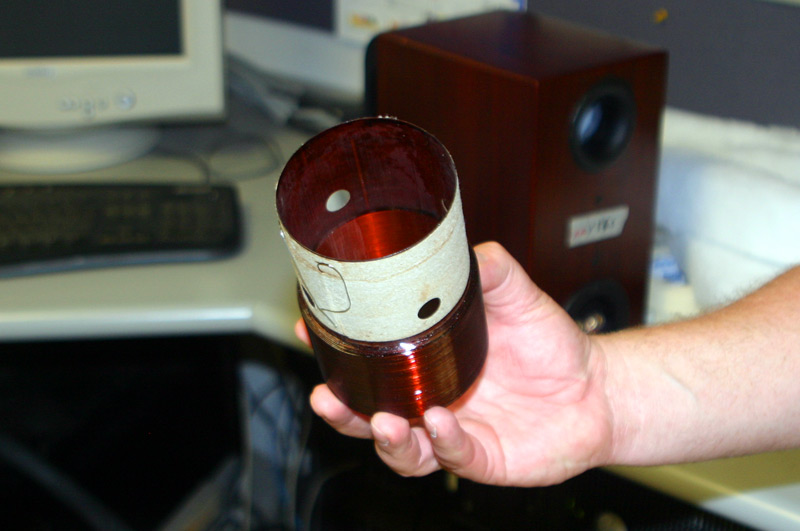
Paradigm’s director of marketing, Mark Aling, holding a freshly wound
voice-coil. Unlike most companies, which purchase their drivers from third-party sources,
Paradigm makes all of their drivers in-house.
Conclusion
Paradigm Loudspeakers takes the term manufacturing
to a new level. But by the end of my day at the Paradigm plant, I think I was most
impressed by the things they do that, to save a buck or two, they could just as easily
have skipped. For example, they test and retest their Anthem preamplifier-processors, but
Paradigm then goes one step further: After its second test, each unit is placed on a
shaker table to simulate rough handling by a careless delivery person. Then that unit is
tested a third time. Only after passing all three tests is it shipped to a dealer
or customer. If you own or are looking to purchase a Paradigm product, you can rest
assured that your new toy has been through quite the process -- from inception to
design and engineering, to manufacture, to testing, and finally to your door. I think I
was as impressed by the Paradigm facility as I was the Sub 2 subwoofer. And when you read
my review of the Sub 2 on October 1, well, you’ll know just what that means.
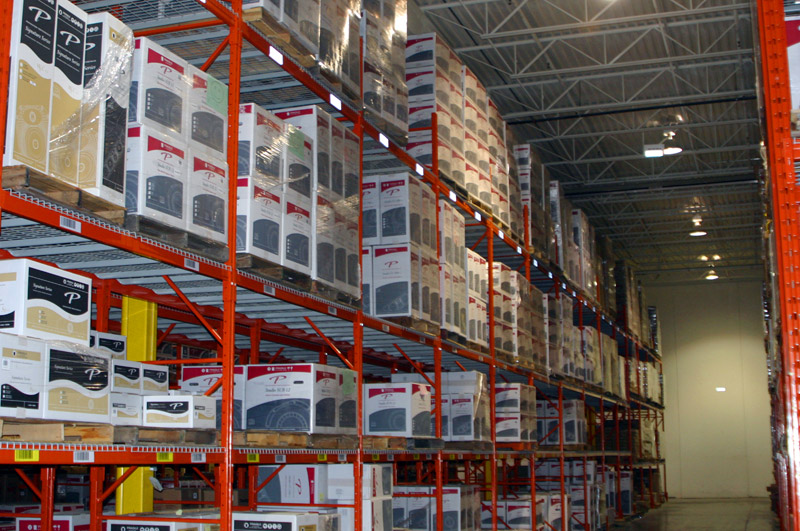
A virtual mountain of Paradigm gear waiting to be shipped.
. . . Jeff Fritz
jeff@ultraaudio.com
|